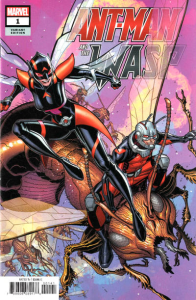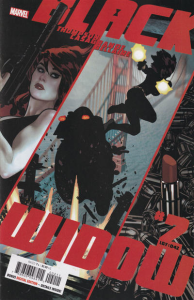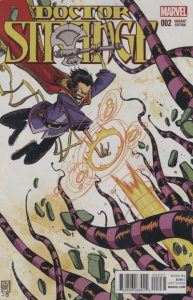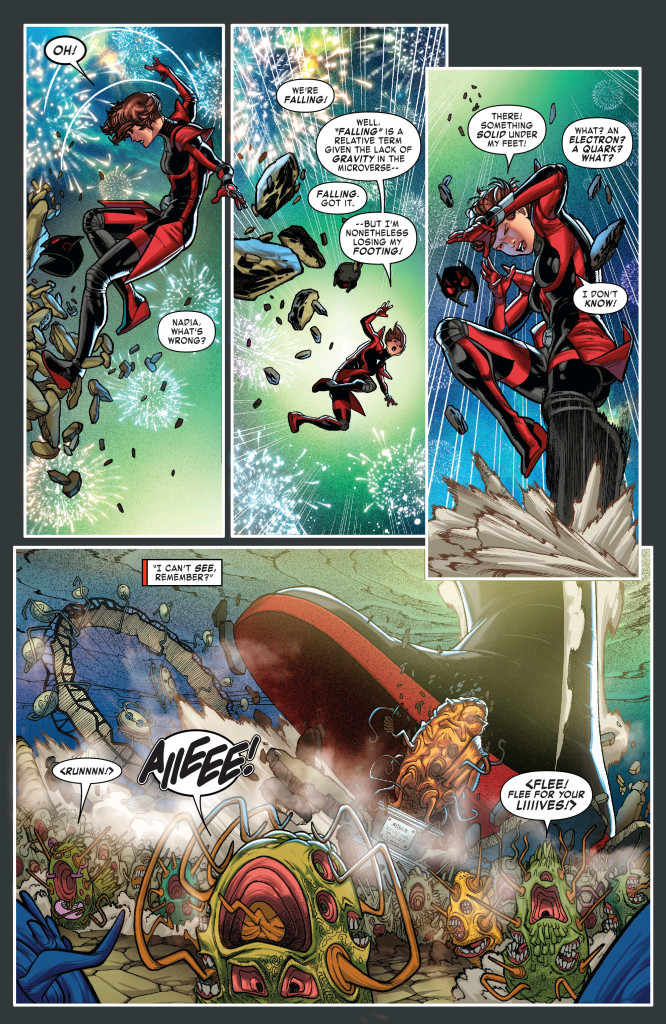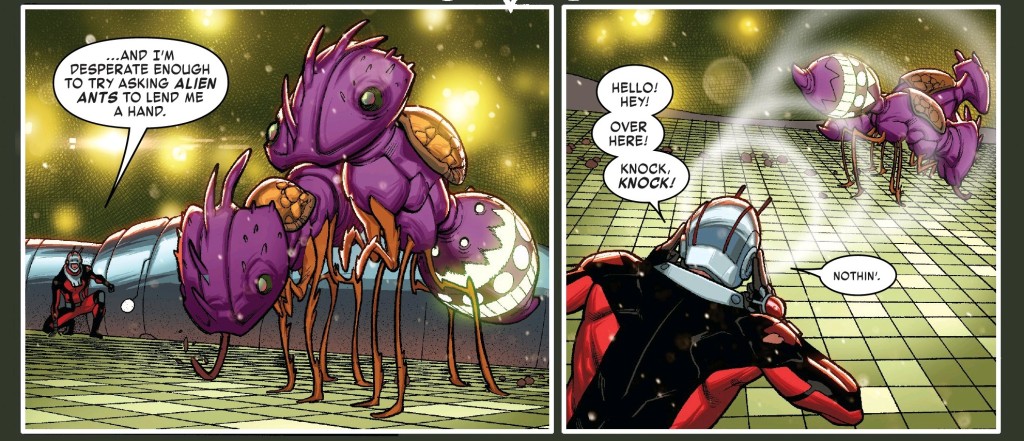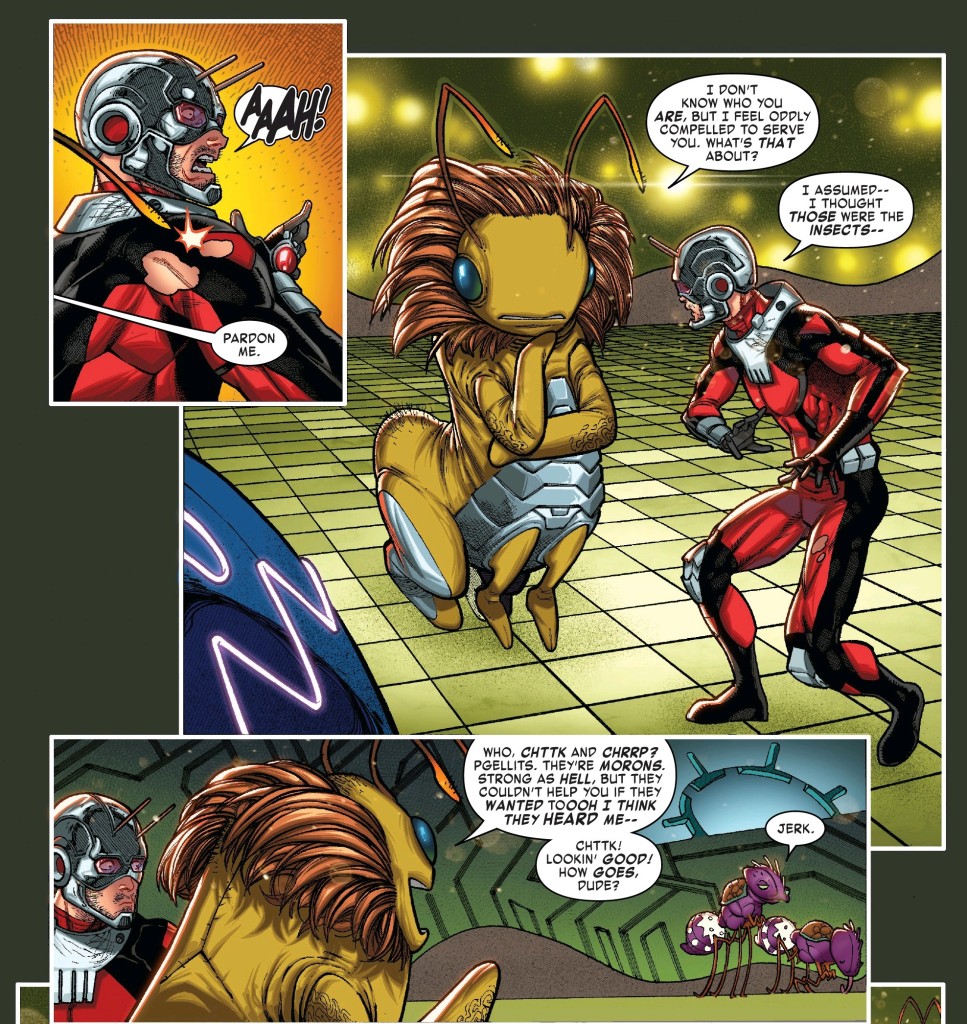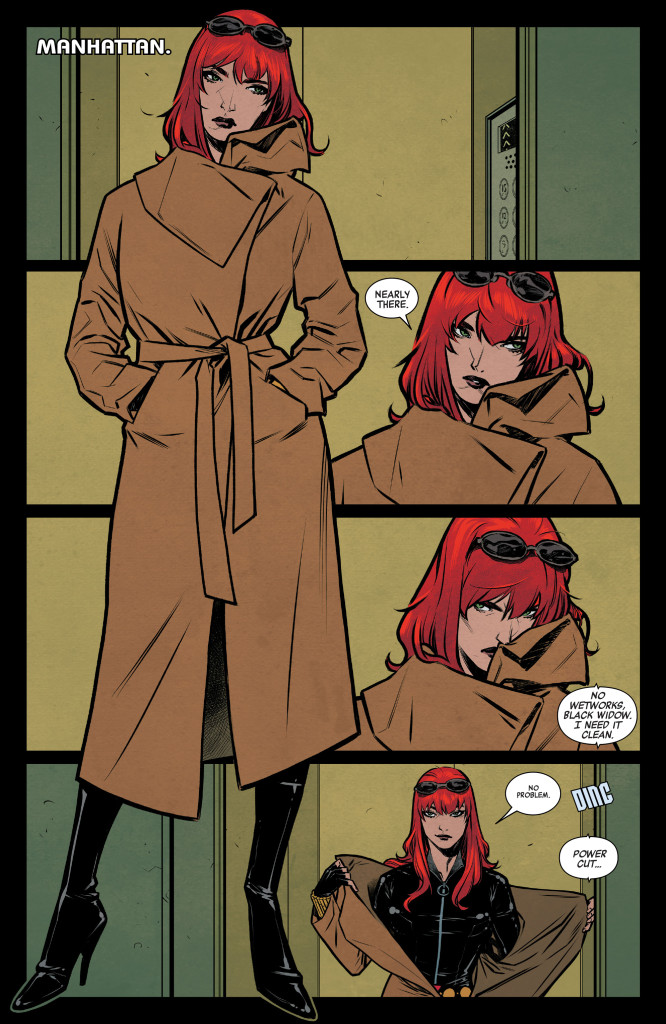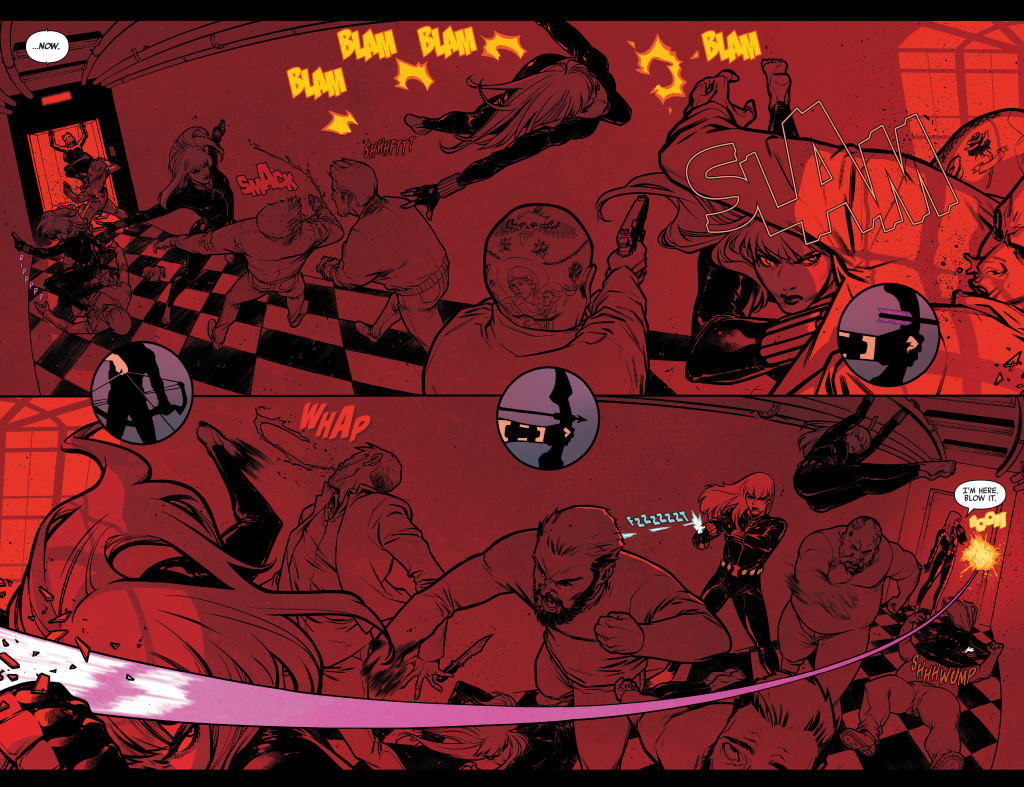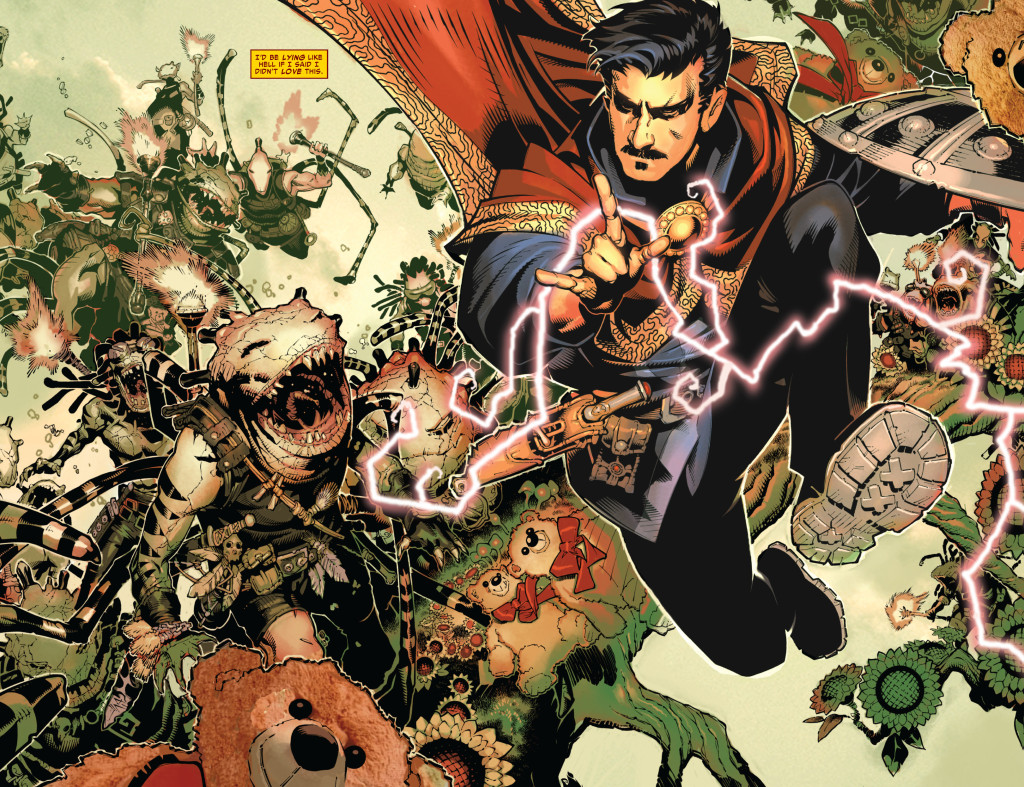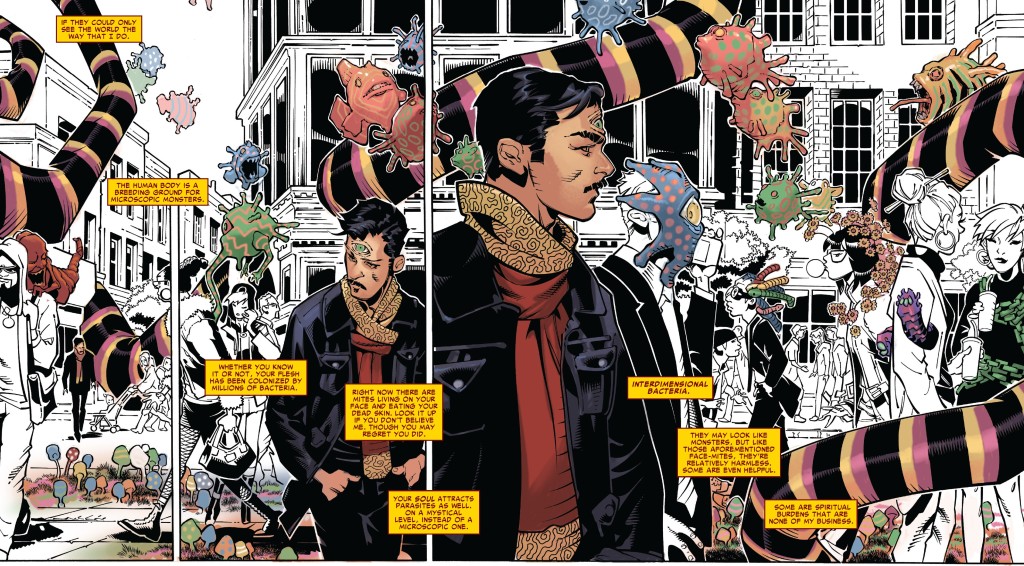In the last decades superheroes have successfully broken into film and TV/streaming with impressive results, to the point where we’re now spoiled (i.e. overwhelmed) with productions for all tastes. From a comic book reader perspective, there have been clear downsides to this: no longer the genre’s primary medium, superhero comics have become relatively stagnant, creatively subordinate to the commercial strategies of other branches of their parent companies, or, at best, cynical IP farms doing trial runs for concepts that can be easily adapted to audiovisual media.
And yet, it isn’t all bad. The concerted effort to exploit the popularity of the expanding MCU has led to the collection of several classic out-of-print tales and pushed new projects about a variety of characters beyond the most iconic figures, diversifying Marvel’s catalogue. And while superhero comics have historically tended to be pretty conservative – even when in revolutionary guise, like The Authority and Planetary (you can find a challenging look at the latter’ ideological implications in Marc Singer’s Breaking the Frames) – imaginative creators have found ways to inject provocative takes on the material. Best of all, this corporate synergy has encouraged the publisher to streamline convoluted properties and come up with accessible books that can be enjoyed apart from the endless crossover events going on in the main series.
Here are three of my favorite byproducts of Marvel’s editorial attempts to promote or further cash in on Disney’s blockbusters:
ANT-MAN AND THE WASP: LOST AND FOUND
In an obvious move to capitalize on 2018’s Ant-Man and the Wasp, Marvel did the smart thing at the time and got Mark Waid to write a self-contained mini-series about the comic-book version of the titular characters – whose suits enable them to radically change sizes… and talk to ants – partnering them up in a delirious trip through the subatomic world.
You don’t have to know more about the heroes than what you get here, as Waid’s characterization is typically sharp (including brief flashbacks about their background). In any case, although there is some heart to the story, this is a smart, plot-driven headspinner that’s more interested in playing around with fun sci-fi ideas based on theoretical physics by having the protagonists shrink down so much that they become living quantum particles themselves, i.e. they suddenly exist in all their possible states at the same time!
The overall tone is not entirely unlike the comedic science fiction of Futurama, Rick and Morty, The Hitchhiker’s Guide to the Galaxy, or Alan Moore’s short stories for 2000 AD.
The stroke of genius, however, was having artist Javier Garrón and colorist Israel Silva illustrate the whole thing. Not only do they nail Mark Waid’s zippy pace, but they maniacally bring to the page the various set pieces, particularly the dazzling sequence in which Ant-Man and the Wasp turn into opposite states of energy (colored like a photograph’s negative), not to mention the hilarious scenes involving a community of tiny multi-mouthed creatures from the Microverse for whom the Wasp’s steps feel like a kaiju monster invasion (as seen in the first scan above).
BLACK WIDOW: THE TIES THAT BIND
Although the much-anticipated Black Widow movie ended up postponed until 2021 due to the covid pandemic, we did get a bunch of books throughout 2020 reprinting previous stories with badass super-spy Natalia Romanova, including a couple of Epic Collection volumes (featuring her earlier appearances, going back to the 1960s), Widowmaker (compiling minis and one-shots from the previous decade), and Marvel-Verse Black Widow (with other scattered comics). In terms of new material, the high point was the launch of a stylish ongoing series – whose first five issues have been collected in the trade The Ties That Bind – where Natasha mysteriously goes off the grid for months, only to remerge as a brainwashed San Francisco architect (as if her personality wasn’t fragmented and traumatized enough!). Soon, lots and lots of people get murdered.
Most of the jaw-dropping visuals are by Elena Casagrande, who elegantly turns every action scene into sheer eye candy. The sensuous, precise lines suit Black Widow’s own sexiness and perfectionism, asides from evoking her architectural alter ego. Another major creative force is Jordie Bellaire, one of the most outstanding colorists working today, likewise able to elevate anything she touches to a higher level (for a sense of Bellaire’s versatility, just compare this to her work on Doctor Mirage and The Nice House on the Lake).
As for Kelly Thompson, she has understandably become a go-to writer when it comes to this sort of thing, having also pulled off an enjoyable Captain Marvel run on the heels of the previous year’s blockbuster. As usual, Thompson combines a knack for snappy dialogue and a palpable love for the Marvel cast (she has a blast with the banter between Hawkeye and the Winter Soldier as key supporting players) with a committed attitude to the genre’s zany logic… Indeed, the premise works better symbolically (implying that family and domesticity are womanhood’s prison, if nothing else because of the emotional ties that bind, as per the title) than on a literal level, but my advice is not to take any of this too seriously anyway: just embrace the villains’ ludicrous, admittedly impractical masterplan and run with it until things inevitably come crashing down into gloriously rendered mayhem.
(Sadly, the series took a nosedive after the first arc… The second volume, I Am The Black Widow, is much more uninspired, if still aesthetically pleasing.)
DOCTOR STRANGE: THE WAY OF THE WEIRD
In the lead-up to the first Doctor Strange film, Marvel commissioned a relaunch of the adventures of its Sorcerer Supreme, smoothly introducing the character to new fans. This move was spearheaded by an ongoing series which – along with spinoffs and reprints – ensured that a bunch of great collections hit the stands around the time the movie hit the screens. Although I had high hopes for this series, given that it was written by Jason Aaron (a master of balls-to-the-wall fantasy) and drawn and colored by Chris Bachalo (whose messy, exaggerated style seems right at home in stories about monsters and magic), I did not expect it to be so damn whimsical… Doctor Strange had starred in some pretty funny comics in the past (The Oath, X-Statix Presents: Dead Girl, Defenders, Thor: Vikings), but laugh-out-loud humor now became a key ingredient of his core series (and Mark Waid further ran with it in his own nifty run a few years later).
Taking a cue from All-Star Superman, the comic gets the boring origin out of the way in the very first page (which efficiently sums up what it took an entire movie to dramatize) and soon starts building towards an epic about a multiversal Inquisition that worships science (curiously presented as the villains in a way that was not yet informed by the Trump/Covid-era debates about science and belief). In other words, the series establishes Doctor Strange’s world by letting us watch him inhabit it – and through his amusing inner monologues – rather than starting his saga from scratch once again.
The entertainment comes from the combination of four different angles. First, you have the counterintuitive intersection between the mundane and fantastical elements of a wizard’s everyday life (‘You’d think a sorcerer supreme would know an incantation for telling time. You’re forty-five minutes late, Doctor’). Then, you have the surrealist overlap between medical and mystical concepts (Psyche-leeches! Interdimensional bacteria! Sentient kidney stones!). Thirdly, there’s Stephen Strange himself, whose over-the-top arrogance is a delight to read (‘These hands are all that stand between you and the forces of darkness. They’re the reason you aren’t currently dissolving in the belly of Shuma-Gorath or groveling at the feet of the dread Dormammu. These hands are the reason you still have a soul. You’re welcome, by the way.’). Finally, there is the sensorial thrill derived from all the bodacious illustrations of bizarre creatures and ridiculous-sounding spells, as Aaron’s scripts keep supplying Bachalo – and roughly a thousand inkers – with the chance to pack each page with trippy grotesqueries and splendid bursts of insanity (usually featuring distorted bodies and elaborate tentacles), both in the ‘regular’ reality and, especially, in the ectoplasmic plane.
So, regardless of your interest in Benedict Cumberbatch’s interpretation of the character on the screen, and whether you track down the singles, trades (starting with The Way of the Weird), hardbacks (Doctor Strange by Jason Aaron), or the recent omnibus edition, I strongly recommend feasting your eyes on these awesome comics!

